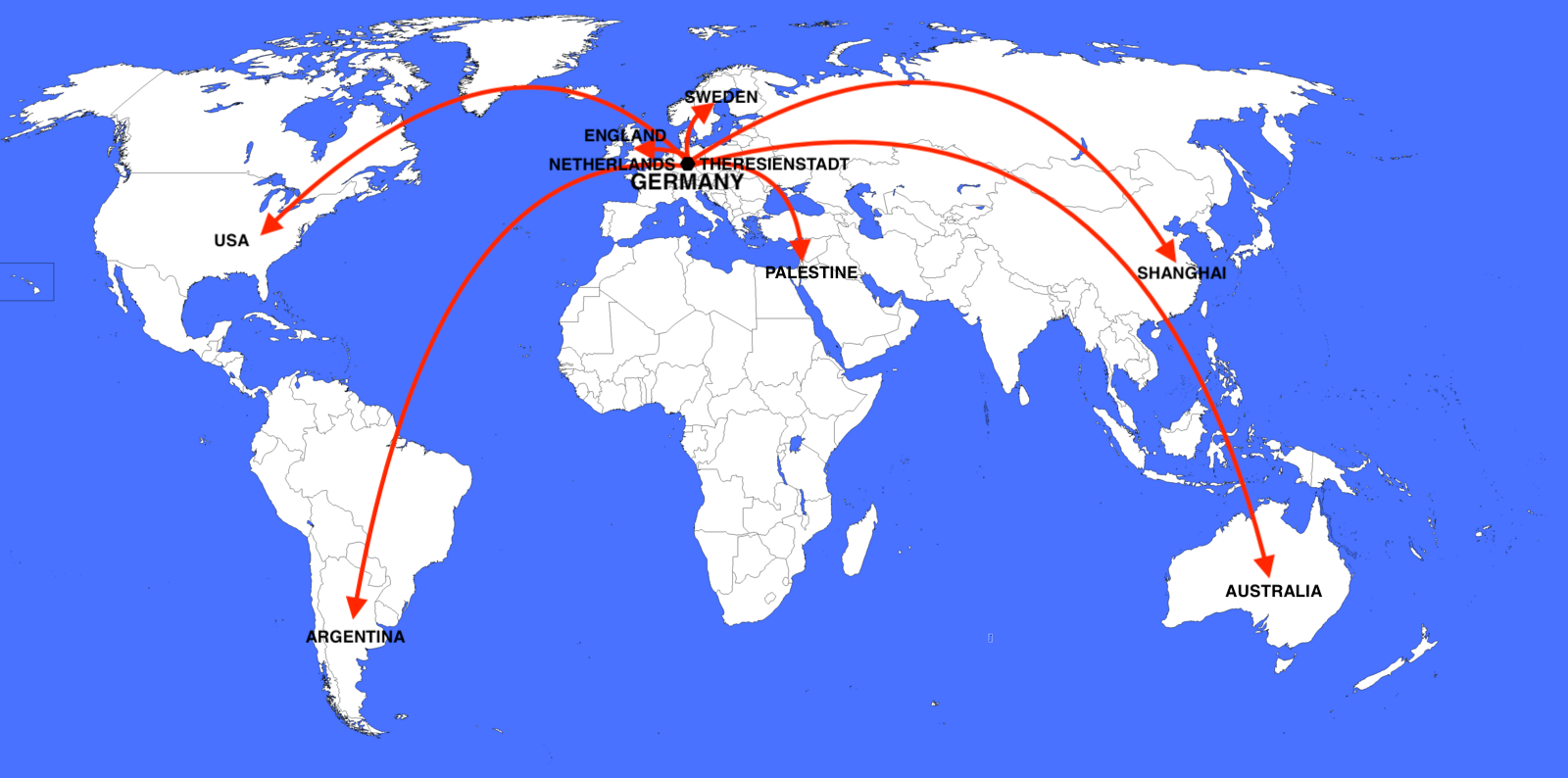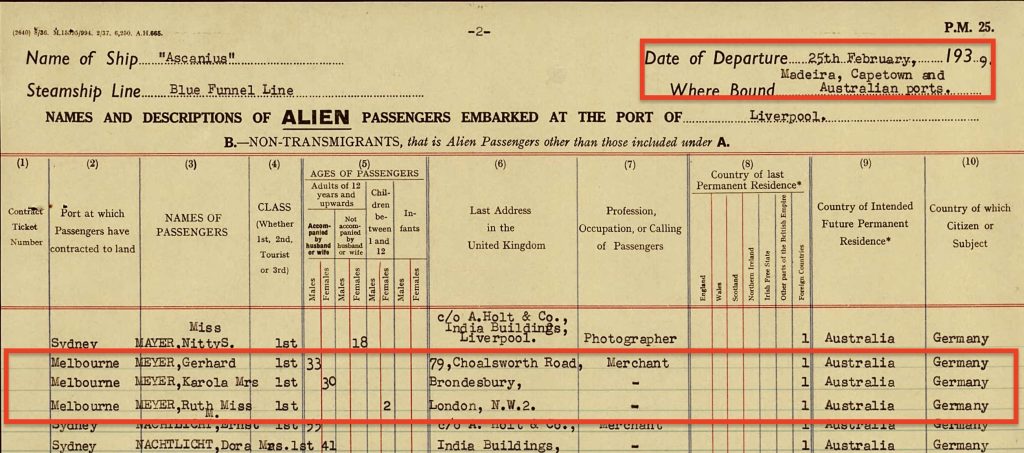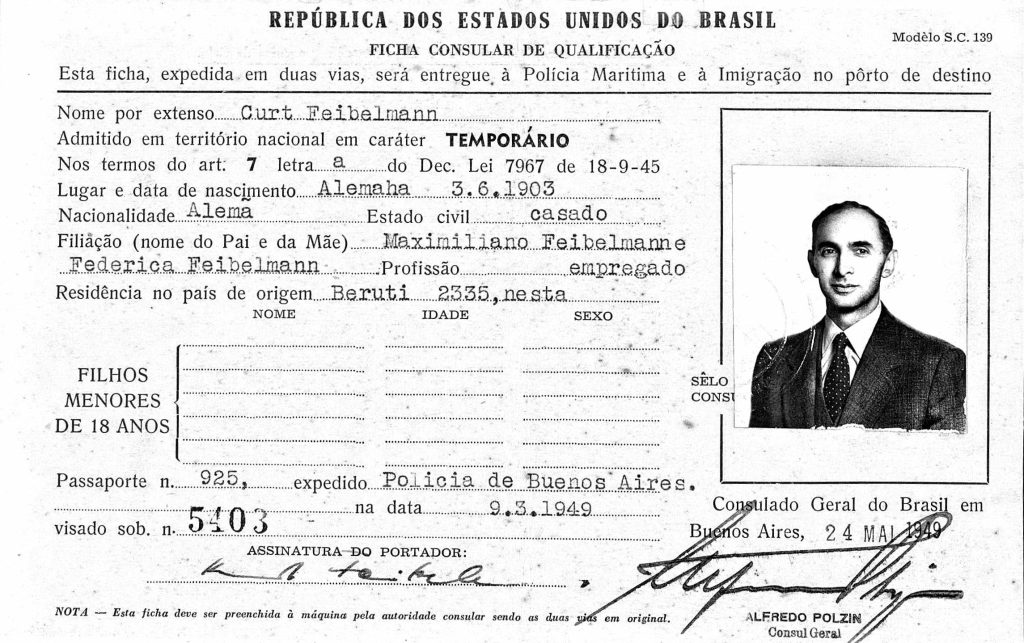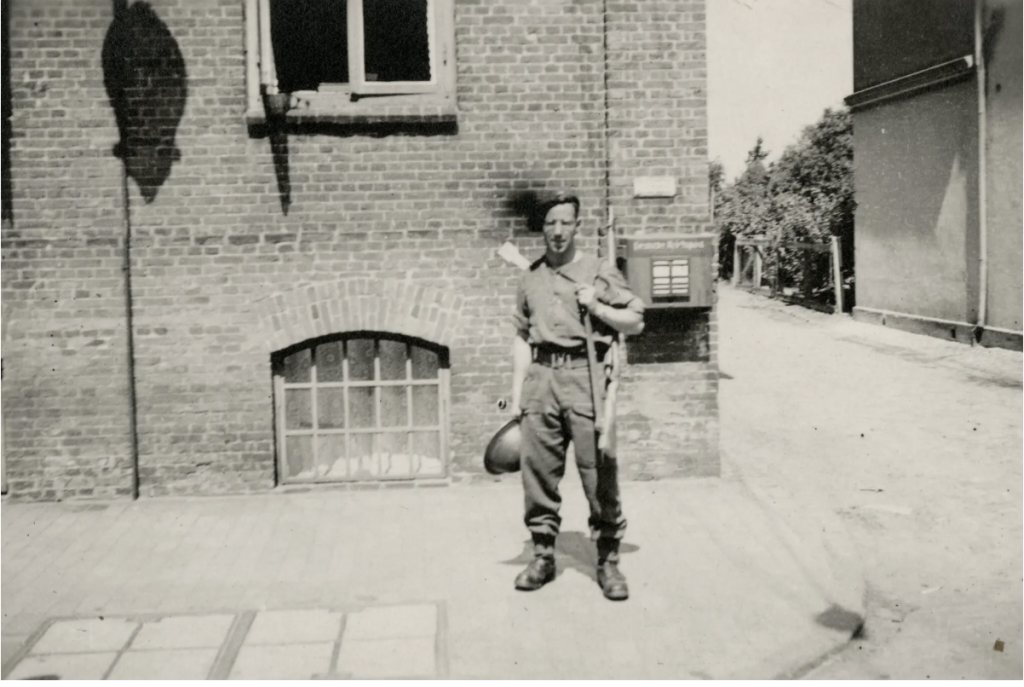
[This page is under construction, thank you for your patience].
On May 7, 1945, Germany surrendered unconditionally to the Allies in Reims, France, thus ending the Second World War and the Third Reich. On this day, Norman Miller, born Norbert Müller in 1924, a soldier in the British Army, was in Hamburg guarding a checkpoint between the American and British sectors of the city. The German army had just surrendered to the Allies, ending the war in Europe. (The war continued in the Pacific until August 1945.) He was to play a key role in the arrest of a perpetrator, as Richard Sandomir reported in his obituary in the New York Times on Norman’s death in 2024.
When a brown Opel that had been driving erratically had to be stopped at the checkpoint, one of the four men in the vehicle said he had papers for Field Marshal Bernard Montgomery to sign. Although a German policeman said the papers “looked all right,” Norman was asked for help.
When Norman looked at the papers, he realized that “we have a big Nazi fish here.” The big fish was Mr. Seyss-Inquart, whose name and face Norman knew from the newspapers. As Reichskommissar for the German-occupied Netherlands, Seyss-Inquart had been responsible for the deportation of thousands of Dutch Jews to concentration camps. He had held a similar position in Poland, where he was known for policies that favored the persecution of Jews.
Seyss-Inquart was arrested; the Allied military tribunal in Nuremberg convicted him of war crimes and he was hanged on October 16, 1946.
*****
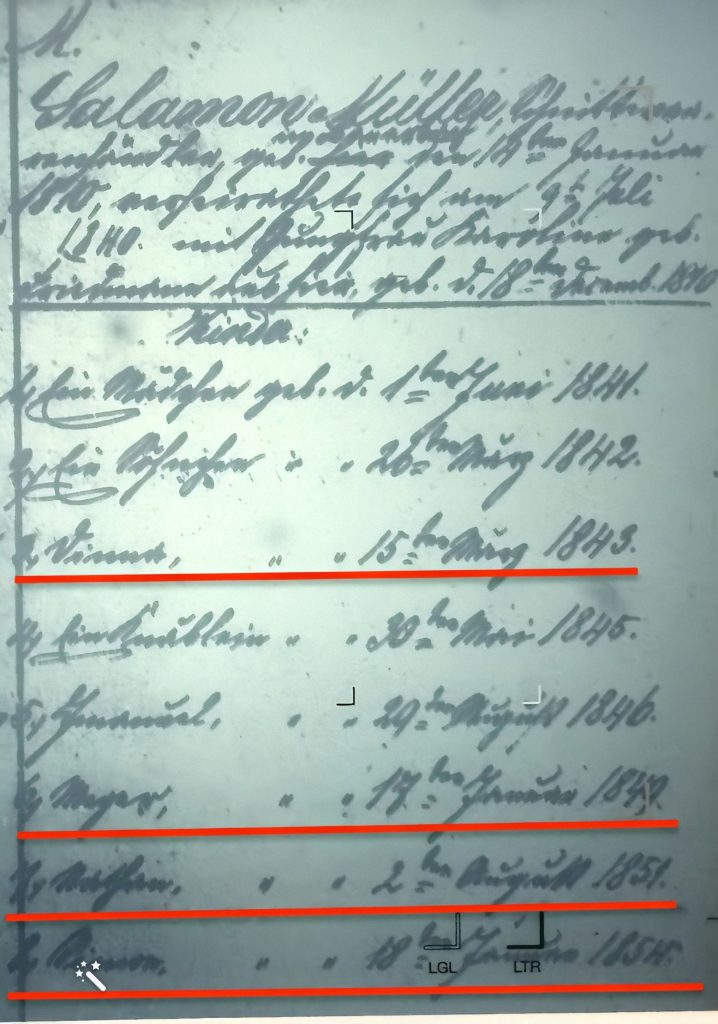
Norman Miller was the great-great-grandson of Salamon and Karoline (née Friedmann) Müller, one of the founding families of the Jewish community of Themar. Salamon and Karoline had 8 children, all of whom were born in the village of Marisfeld. But only four reached adulthood: Dina (1844-1915), Mayer (1849-1907), Nathan (1851-1923) and Simon (1854-1911).
In the mid-1860s, Salamon and Karoline moved to Themar, where they opened the S. M. Müller department store in Bahnhofstrasse near the market square.
Mayer Müller remained in Themar and took over the business after his father’s death in 1890. His siblings – Dina, Nathan and Simon – lived, married and started families in places other than Themar. Dina married Moses Walther and moved to Hildburghausen; Nathan stayed in Marisfeld, his birthplace, and Simon moved to Meiningen. All four died in the first decades of the 1900s.
Before 1933, the Müller family was a family of migration within Germany, but not of emigration from Germany. And so the family continued to grow through marriage and starting a family. When the Nazi regime began on January 30, 1933, at least 76 Müllers were living in Germany. Most of them lived in Thuringia; some families also lived in Hesse and Bavaria.
Between January 30, 1933, the beginning of the Nazi regime, and October 16, 1941, when the first deportations from Germany to the ghettos in occupied Poland began, the nature of the Müller family changed. Most, if not all, of them began to plan their escape. The first to go was the family of Max Walther, born in 1904 in Hildburghausen, grandson of Dina Walther (née Müller). In 1934, Max went to Palestine with his wife Karoline (née Greiner) and their two-year-old twins Max and Siegmund. Max’s father and mother, Albert and Minna (née Linz) Walther, followed them in 1937.
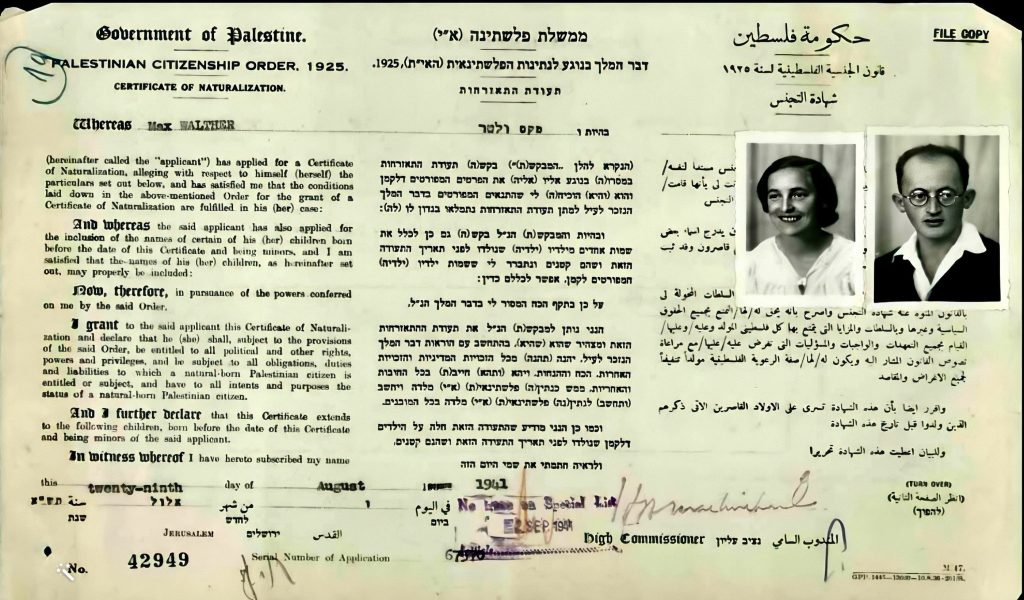
Others followed, but the decision of where they went depended on forces beyond their control, such as immigration quotas or outright bans imposed by countries like Argentina, the United States, England, etc. Very quickly, the Müllers who were able to find refuge found themselves scattered all over the world: England (3), in European countries such as Sweden (1), Denmark (1), the Netherlands (6) and in faraway countries such as Argentina (4), Australia (3), Shanghai (2), Palestine (8), and the USA (13).
The 15-year-old Norbert Müller, born in 1924, left Germany for England in 1939 as part of the Kindertransport program, not knowing that he would return to Germany as a British soldier.
The members of one family could find themselves in different places. The three children of Siegmund and Rosa Müller (1876-1932), for example, lived in three countries: England (Margarete, b. 1905), Australia (Karola, b. 1908), and the United States (Martin, b. 1909). The three sons of Max II and Clara Müller also lived in the United States (Herbert), Sweden (Meinhold) and Palestine (Willi).


A total of 49 Müllers were living in other countries in October 1941, when voluntary emigration was banned. Among them were two families who lived in the Netherlands and hoped that the country would maintain its neutrality, as it had done during the First World War.
The last person to leave Germany was 64-year-old Recha Süssmann, née Walther, who left Berlin on September 8, 1941 and took a sealed train to Spain.
On October 18, 1941, the first train left Berlin with over 1,000 Jews heading east to the Litzmannstadt ghetto in Lodz.
*****
In the four years of deportation and murder, 32 descendants of Salamon and Karoline (née Friedmann) were deported to ghettos, concentration camps and killing centers. Those who were still in Thuringia were deported with the two large transports from this federal state, the first on May 10, 1942 to the Belzyce ghetto, to which Clara and Max Müller II and six other Müllers belonged, and the second on September 19 and 20, 1942 to the Theresienstadt ghetto, to which Frieda and Max Müller I belonged. In February 1943, one of the families in the Netherlands – Käthe Wurms (née Nussbaum), her husband and their young daughter Altje – was transported from the Westerbork transit camp to Auschwitz and murdered. In the same year, 42-year-old Semi Müller was murdered in a euthanasia center in Schmalkalden/South Thuringia in 1943. In August 1944, Rita (née Walther) Dressel lost the protection of her marriage to a non-Jew when Karl Dressel died; she and her two small children Walter and Margot were taken to the Theresienstadt ghetto. Gertrud (née Walther) Heim, also the widow of a non-Jew, was deported from Berlin to the Theresienstadt ghetto in January 1945.
*****
But on May 8, 1945, Rita, Walter and Margot Dressel were still alive, as was Gertrud Heim. They were liberated by the Russian army in the Theresienstadt ghetto on May 8, 1945. Rita, Walter and Gertrud returned to Germany: Gertrud left East Germany in 1951 and went to West Germany; Rita moved to Frankfurt a/Main where she died in 1983. Walter moved to Greifswald in northeast Germany where he died in 2012. Margot moved to Israel, where she married and started a family.
Elsewhere in occupied Europe lived the family of Sebald Müller, the son of Simon Müller, who had survived the war and the Holocaust in the Netherlands. We do not yet know how: in 1939, Sebald was released from the Dachau concentration camp, where he had been imprisoned since Kristallnacht. He left Meiningen with his wife Hertha (née Heinemann) and their daughter Ursula and moved to the Netherlands. Sebald was a chemist – is it possible that this expertise enabled the family to survive? Sebald only lived for a few weeks after the end of the war and died on June 15, 1945. Karoline and Ursula remained in the Netherlands; Hertha died in 1983 and Ursula in 1999.
*****
The other 37 descendants were scattered all over the world. The search for the missing had top priority, closely followed by the search for their loved ones, wherever they might be.
PALESTINE: Eight Müllers had immigrated to Palestine before Kristallnacht/ Reichspogromnacht in November 1938. Six came from the family of Dina’s eldest child Albert Walther.
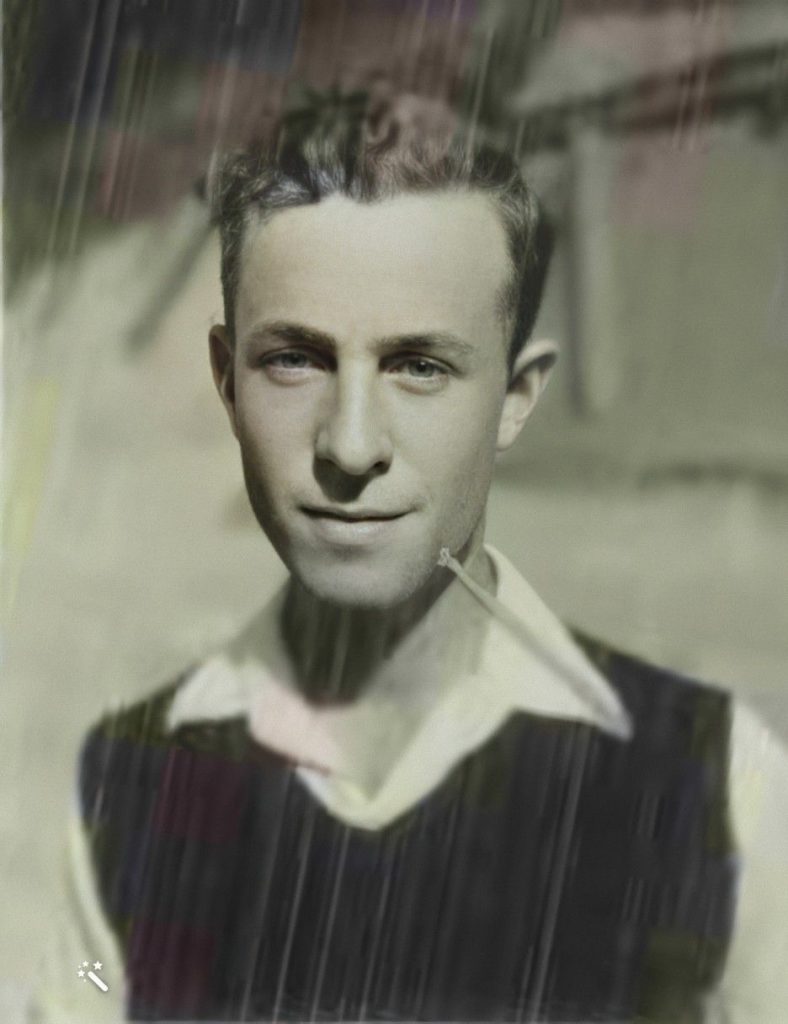
The other two came to Palestine as young, single men: Werner Müller, son of Hermann Müller (1878-1942) and Bella (née Meyburg), came to Palestine on September 22, 1935. Werner was 25 years old. In 1948, Werner lost his life in the Arab-Israeli war.
The other was 16-year-old Willi Müller, son of Max II and Clara (née Nussbaum) Müller, who came as part of the Hachshara movement to help German Jewish youths leave Germany. Willi arrived in Palestine in the fall of 1938. He married a German-Jewish woman, Ruth Meyersohn, born in 1922, in Rügenwalde/Pomerania. Willi lived until 2013.
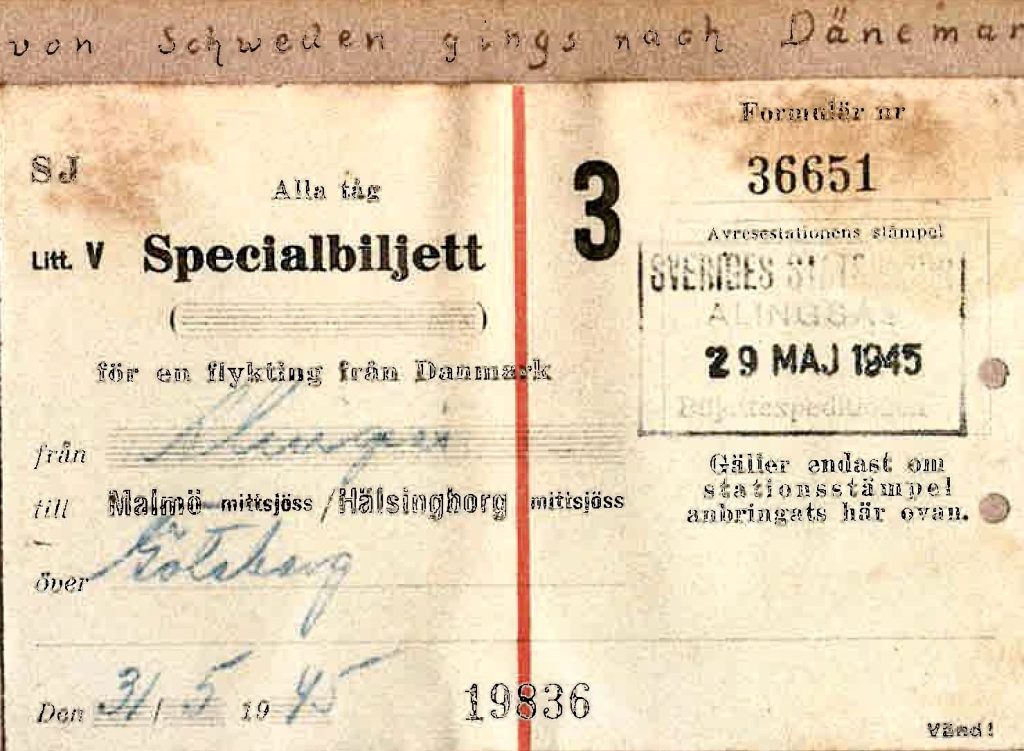
fSWEDEN: Two great-grandchildren were in Sweden on May 8, 1945: Julius Müller and Meinhold Müller, both born in 1919. Julius was the son of Leopold and Pauline (née Steindler) Müller and Meinhold the son of Max II and Clara (née Nussbaum) Müller. Both had come to Sweden via detours: Meinhold had left Themar in 1935 and traveled to Italy as part of a Hachshara group; in 1938 he had left Italy and immigrated to Sweden. Julius had left Themar and gone to Denmark. In 1943, when the Nazis planned to round up the Jews in Denmark, Julius was taken to Sweden and was there when the war ended.
After the war, however, they parted ways: Julius left Sweden. When the Danish king welcomed all Jews who had left Denmark in 1943 to his homeland, Julius decided to accept – as his son recounts, “no one had ever invited him to live anywhere.” Julius was allowed to return to Denmark on May 29, 1945. He married Lissa Anderson, and two of their sons have become part of life in Themar since the 2000s.
 Meinhold stayed in Sweden and married Rebecka Liwerant, a survivor of the ghettos and concentration camps of the Nazi era, who was brought to Sweden by the Red Cross.
Meinhold stayed in Sweden and married Rebecka Liwerant, a survivor of the ghettos and concentration camps of the Nazi era, who was brought to Sweden by the Red Cross.
SPAIN: It is believed that Recha Süssmann, née Walther, was alive on May 8, 1945. But to date, no traces of her post-war life have been discovered.
ENGLAND:
Margarethe Müller, daughter of Siegmund and Rosa (née Freudenberger) Müller, was living in England on May 8, 1945. She had managed to leave Germany and enter Great Britain. In the September 1939 register for England and Wales, she was living at 19 Arkwright Road in Surrey, England. On May 15, 1941, she married Lothar Friedmann, born 1900 in Erfurt, a German Jewish refugee. Lothar had been imprisoned in the Buchenwald concentration camp after Kristallnacht/Reichspogromnacht in November 1938. He traveled to England before the start of the Second World War. When he appeared before the Enemy Alien Tribunal on November 16, 1939, he was initially released from internment. However, when the German army conquered France in June 1940, Lothar was rounded up and interned in England until October 1940. Lothar changed his name to Lawrence Freeman; he and Margaret had a son, Stanley, and remained in England for the rest of their lives. Lawrence died in 1983; Margaret did not remarry and died in 2003. Their son Stanley Freeman lives in Israel with his wife, and they have a family of children and grandchildren.
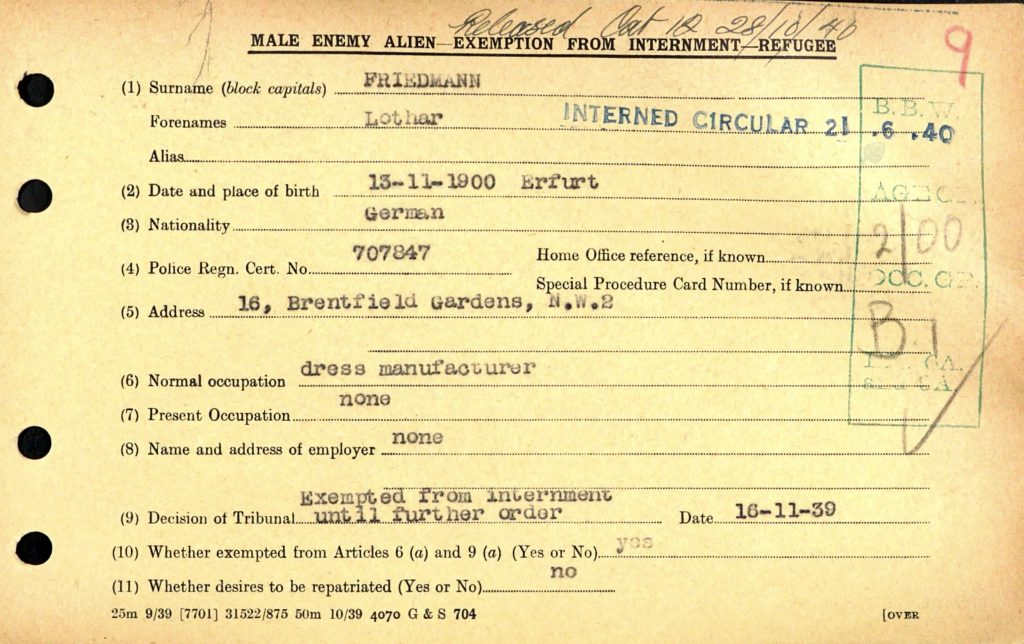
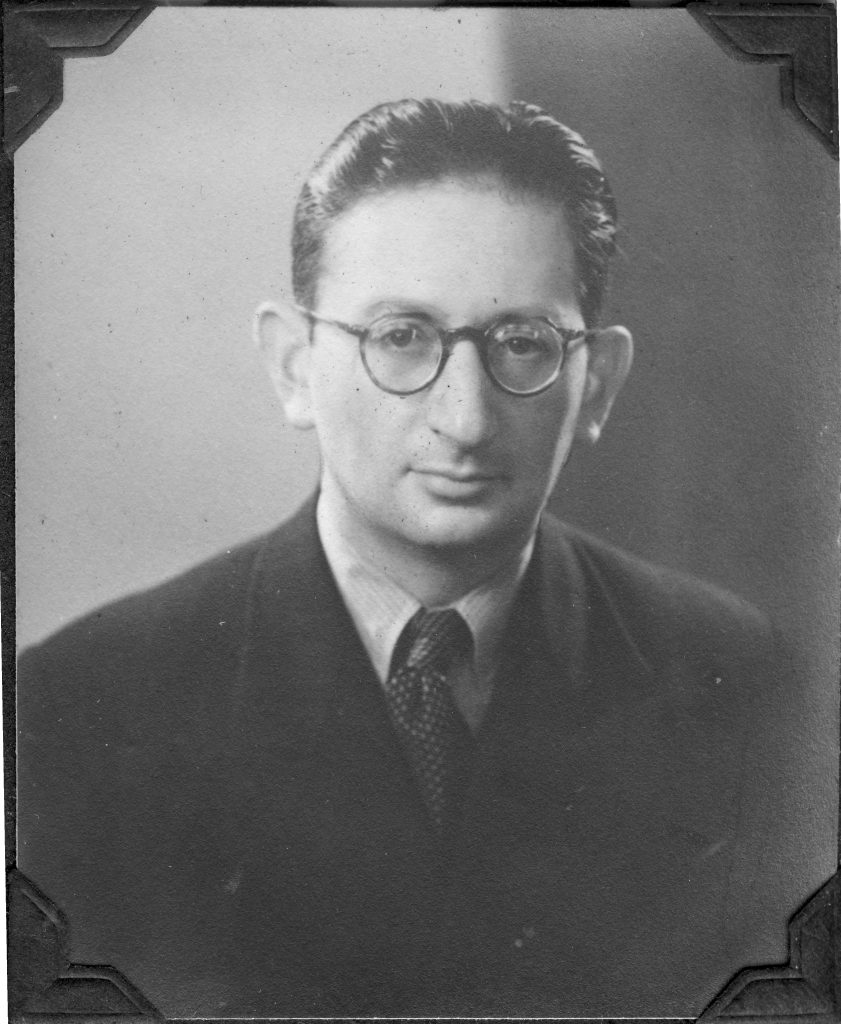
Erich Neumann, the husband of Fränze Müller (born 1910), was also in England. After his release on December 28, 1938 from imprisonment in the Dachau concentration camp following Kristallnacht/Reichspogromnacht, Erich managed to leave Germany in July 1939 and reach England with the support of the Kitchener Camp Scheme. In the camp, according to his niece Fredel Fruhmnn, “Erich worked as a waiter and as a gabbai (supervisor) for the Orthodox services; he was involved in the procurement of food for those who kept kosher.”
When the Kitchener camp was closed, Erich was interned on the Isle of Man, where he acted as “house manager” for one of the houses where over 50 Orthodox men lived; he was instrumental in procuring kosher food.
Erich left the Isle of Man at the end of 1940 and then lived in various places in England, where he worked as a teacher and secretary in a number of schools and synagogues; his last position in England was as secretary of Willesden Synagogue in London.” He was there when the war ended.
His wife Fraenze and two young sons, Ludwig and Wolfgang, were unable to accompany him and were murdered in Auschwitz in 1943. Erich left England on June 12, 1947 on the ship Marine Falcon for the United States. He remarried in New York City and became the father of two daughters.
AUSTRALIA
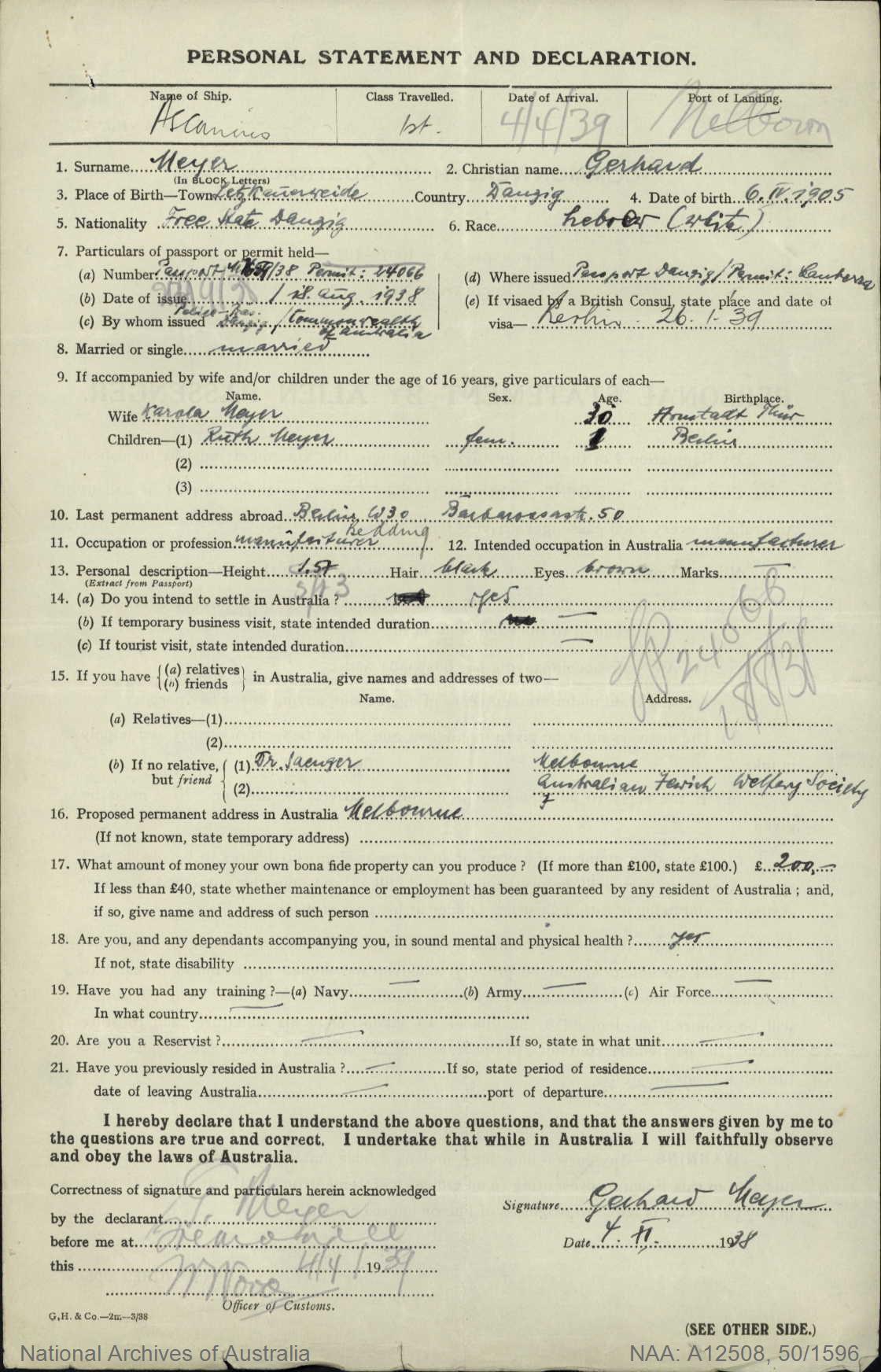 Karola Müller, born in Arnstadt in 1908, was the second child of Siegmund and Rosa Müller.
Karola Müller, born in Arnstadt in 1908, was the second child of Siegmund and Rosa Müller.
On June 6, 1935, Carola married Gerhardt Meyer in Berlin, who came from Letzkauerweide near Danzig and was therefore a Polish citizen. In 1937 Carola and Gerhard lived in Berlin where a daughter, Ruth, was born on March 4.
Carola and Gerhard began planning their emigration in 1938. On August 18, 1938, the family received a passport from Danzig and in September or October 1938 they received a “landing permit” which allowed them to enter Australia. On January 16, 1939, the British consul in Berlin gave the Meyers permission to enter Great Britain to travel from Liverpool to Melbourne in Australia. On February 26, 1939, Karola, Gerhard and Ruth sailed from Liverpool. They arrived in Melbourne on April 4, 1939.
On March 10, 1942, Gerhard enlisted in the “Australian Military Forces” and served for two years until May 17, 1944. After his discharge, he applied for Australian citizenship on July 7, 1944 and became an Australian a year later – on July 30, 1945. Karola made her own application.
Karola died on June 29, 1988, Gerhard (as Gerhardt) died on June 23, 1997. Ruth married David Black and started a family. She learned that her mother had kept in touch with her siblings Margaret in London and Martin in the United States, and began to maintain these connections.
ARGENTINA
One Müller family left Germany and found refuge in Buenos Aires. It was the family of Albert Müller, born in Themar in 1878, his wife Martha Vollmann, born in Meiningen in 1884, and their two children Margot, born in 1908, and Hans, born in 1911. The children were born in Arnstadt, where the family lived and where Albert ran a business with his brother Siegmund.
Albert and his family left Germany in 1937 and settled in Buenos Aires. Albert died on May 14, 1945, just a few days after the end of the war. Martha remained in Buenos Aires until her death in 1976.
Both Hans and Margot married and both married German Jews who, like them, had found refuge in Argentina.Gerhard enlisted in the “Australian Military Forces” on March 10, 1942 and served for two years until May 17, 1944. After his discharge, he applied for Australian citizenship on July 7, 1944 and became an Australian a year later – on July 30, 1945. Karola made her own application.
Karola died on June 29, 1988, Gerhard (as Gerhardt) died on June 23, 1997. Ruth married David Black and started a family. She learned that her mother had kept in touch with her siblings Margaret in London and Martin in the United States, and began to maintain these connections.
Hans married Babette Bärbel Mayer, born in Ichenhausen/Bavaria in 1915. Bärbel’s father Leopold died at home in Germany in January 1939; her mother Thekla was able to emigrate with her daughter to Argentina, where she lived until 1989.
Margot married Curt Feibelmann, born in Obermoschel/Rhineland in 1903, who had been imprisoned in one of the first concentration camps, Sachsensburg, in 1933. Sachsenburg concentration camp was located in Frankenberg, Saxony, near Chemnitz and was “the most important and longest-running early concentration camp operated by the SS in Saxony. It was set up by the National Socialists in the spring of 1933 to eliminate their main political opponents, particularly communists, social democrats and trade unionists. The camp was an abandoned four-storey textile factory that was renovated in May 1933 to serve as a ‘protective custody’ facility for dissidents such as Jehovah’s Witnesses who opposed the Nazi regime.”
It is not yet known how long Kurt was in Sachsenburg and when he was able to flee Germany and emigrate to Argentina. The following documents with photos of Margot and Curt are dated 1949. They are both German citizens. Los visados de turista para Brasil de 1956 identifican tanto a Margot como a Curt como ciudadanos argentinos. The dates of death of Margot and Curt are not yet known.
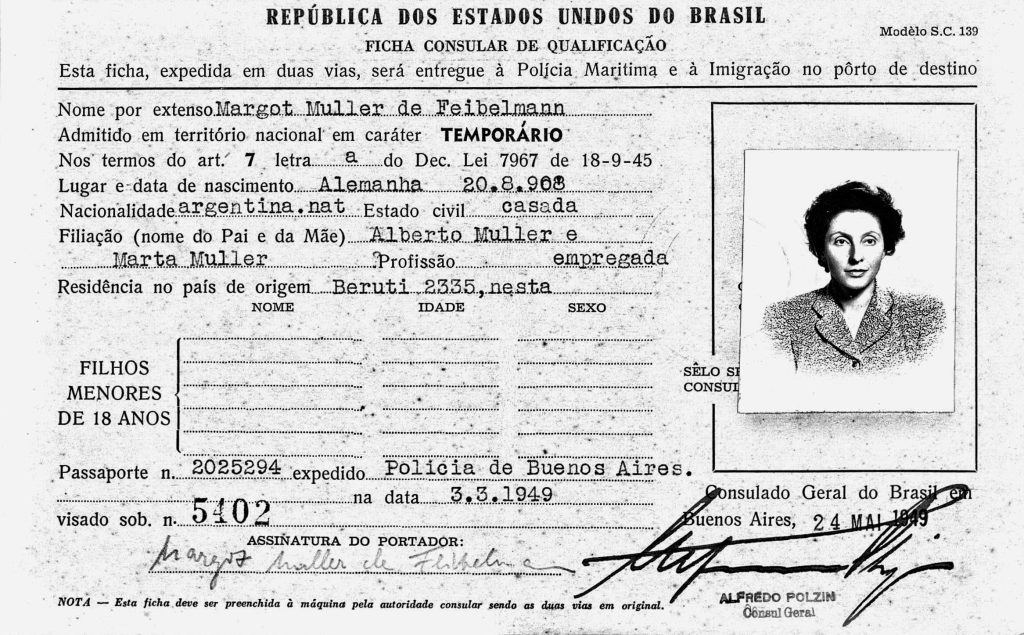
SHANGHAI
The emigration of Karl and Recha Müller to Shanghai was part of the migration of another family, namely the Schwab and Rosengarten families. Karl Müller, the youngest son of Mayer Müller, was born in Themar in 1886. He was a partner of Oskar Schwab (also born in Themar) in the clothing store in Schleusingen. Karl and Oskar were both arrested on Kristallnacht and imprisoned in Buchenwald in so-called “protective custody” until December 6, 1938.
Immediately after his release, plans for emigration began. Oskar Schwab was able to finance the emigration for himself and his wife Frieda Schwab, née Steindler, as well as for his sister Berta Rosengarten, née Schwab, and Berta’s husband Paul Rosengarten and their two sons Manfred and Erich.
The two Mullers, the four Rosengartens and two Schwabs left Germany for Italy in May 1939. They sailed from Genoa to Shanghai. They lived in the Shanghai ghetto until the war ended in the Pacific on September 2, 1945. All three families wanted to leave China, but needed permission to enter the United States. This did not happen until 1947.
On April 30, 1943, Recha and Karl left Shanghai, sailed to San Francisco and finally settled in Hartford, Connecticut, where Oskar and Frieda also lived. Karl died at the age of 92, Recha in 1986.
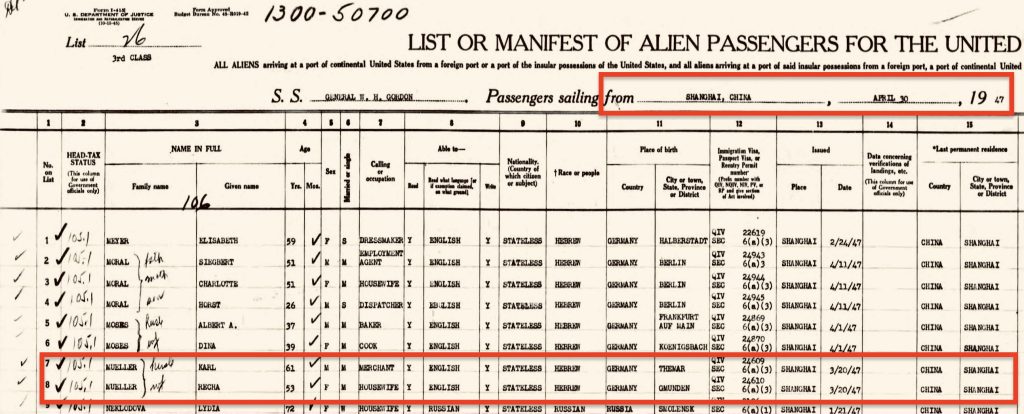
UNITED STATES
Eighteen (18) Millers were in the eastern United States on May 8, 1945.
Eight were the descendants of Mayer Müller and his wife Babette Friedmann. Martin Müller was the only son of Siegmund Müller and his wife Rosa Freudenberger. He was the brother of Margarete, who had gone to England, and of Karola, who had gone to Australia. In 1936, he and his wife Mary fled to France. They lived in Nice, where a son was born in 1939. Finally, on May 19, 1940, they were able to leave France and go to the United States. They settled in Chicago where Martin died in 1985, Mary 10 years later.
Fritz Häusler was the son of Karoline Häusler, née Müller, and Leopold Häusler. In November 1939, Fritz traveled with his wife Rosa (née Rapp) and their young child Gisela. (Rosa Häusler’s parents were also able to flee to the United States.) Fritz’s stepbrother, Erich Häusler, the son of Leopold Häusler and Berta Rosenthal, his second wife, was also able to enter the United States with his wife Paula Frank.
Ten were descendants of Nathan Müller and his wife Bertha Schwed, who had all come as family groups: Sitta Amram, née Nussbaum, daughter of Else Nussbaum, née Müller, her husband Meinhardt and their young son Manfred. Else, a 54-year-old widow, emigrated with her daughter’s family. Bella Goldmeier, daughter of Karoline Goldmeier, née Müller, her husband Moritz Goldmeier and their little daughter Esther. Herbert and Flora (née Wolf) Müller, and Flora’s mother, Frieda Wolf, née Mayer. In 1943, Herbert and Flora had a daughter.
*****
And so we return to 21-year-old Norman Miller, who was on guard duty in Hamburg on May 7, 1945. He was discharged in 1947 and left England the following year for New York, where he took a train to Toronto within a few days. He returned to New York in September 1949 and worked there for many years as a tool and die maker, mainly in the Bronx. In 1951 he married Ingeborg Sommer, who had left Germany with her family in 1938. She died in 1996.
In an interview with WNBC-TV in New York, he told the story of Seyss-Inquart’s arrest. Norman said that the arrest did not give him much satisfaction. “I mean, I wasn’t overjoyed. It didn’t help bring back my parents and my family.”
On February 24, 2024, Norman Miller died. He was almost 100 years old. The collection of his letters, diaries can be found in the USHMM.
Richard Sandomir, “Norman Miller, German Refugee Who Helped Arrest a Top Nazi, Dies at 99,” New York Times, April 05, 2024
See as well: Cornell Hoppe: Themar’s Jewish families and the end of the war in 1945
